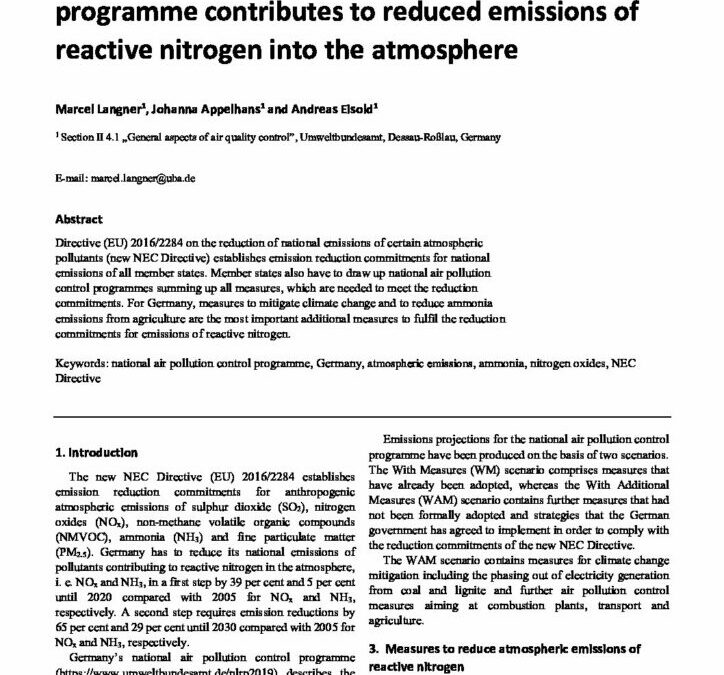How Germany’s national air pollution control programme contributes to reduced emissions of reactive nitrogen into the atmosphere

Directive (EU) 2016/2284 on the reduction of national emissions of certain atmospheric pollutants (new NEC Directive) establishes emission reduction commitments for national emissions of all member states. Member states also have to draw up national air pollution control programmes summing up all measures, which are needed to meet the reduction commitments. For Germany, measures to mitigate climate change and to reduce ammonia emissions from agriculture are the most important additional measures to fulfil the reduction commitments for emissions of reactive nitrogen.
The new NEC Directive (EU) 2016/2284 establishes emission reduction commitments for anthropogenic atmospheric emissions of sulphur dioxide (SO2), nitrogen oxides (NOx), non-methane volatile organic compounds (NMVOC), ammonia (NH3) and fine particulate matter (PM2.5). Germany has to reduce its national emissions of pollutants contributing to reactive nitrogen in the atmosphere, i. e. NOx and NH3, in a first step by 39 per cent and 5 per cent until 2020 compared with 2005 for NOx and NH3, respectively. A second step requires emission reductions by 65 per cent and 29 per cent until 2030 compared with 2005 for NOx and NH3, respectively. Germany’s national air pollution control programme (https://www.umweltbundesamt.de/nlrp2019) describes the pathway including needed measures to comply with these reduction commitments.
